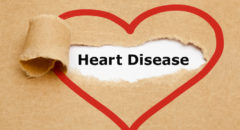 Think you may have some symptoms of coronary artery disease? First thing’s first, seek help. The more information you have, the better. Start by scheduling an appointment with your general doctor. They will perform a physical exam and if diagnosed, they will more than likely refer you to a specialist such as a cardiologist, vascular specialist, or even a neurologist.
Think you may have some symptoms of coronary artery disease? First thing’s first, seek help. The more information you have, the better. Start by scheduling an appointment with your general doctor. They will perform a physical exam and if diagnosed, they will more than likely refer you to a specialist such as a cardiologist, vascular specialist, or even a neurologist.
Once you see a specialist, your healthcare provider may recommend one or more tests to officially diagnose your coronary artery disease. These tests can help define the extent of your disease and find the best treatment plan for you. According to MedlinePlus.gov, these procedures may include:
1. Blood Tests: These check the levels of such things as electrolytes, blood cells, clotting factors and hormones in the blood. Specific enzymes and proteins that can indicate problems with the heart will be tested for.
2. Ankle/Brachial Index: This compares the blood pressure in your ankle with the blood pressure in your arm to see how well your blood is flowing. Used to help diagnose P.A.D.
3. ECG (Electrocardiogram): An ECG detects andrecords the heart's electrical activity. It shows how fast the heart is beating and its rhythm (steady or irregular).
4. Echocardiography: An echocardiogram uses ultrasound waves to display the movements of the heart as it beats. The image produced allows doctors to measure precisely the dimensions of the heart, to view the structures of the heart (such as the heart valves), and to assess any damage to the heart muscle.
5. Computed Tomography Scan: This procedure creates computer-generated pictures and can show hardening and narrowing of large arteries.
6. Stress Test: For this test, you exercise (or are given medicine if you are unable to exercise) to make your heart work hard and beat fast while heart tests are done. A stress test can show possible signs of CAD.
7. Angiography: An angiogram (also known as cardiac catheterization) is a diagnostic test that involves inserting a small, flexible tube (catheter) into an artery in the wrist or groin. The catheter is threaded up through the artery, into the aorta and is positioned at the entrance to the coronary arteries.
A specialized x-ray dye containing iodine is injected through the catheter and into the coronary arteries. The x-ray dye is able to be seen on an x-ray screen and produces an outline of any narrowing or blockages in the arteries. Heart function and efficiency can also be assessed during this test.
8. Nuclear Isotope Imaging: Nuclear isotope imaging involves the injection of a radioactive compound called a tracer into the bloodstream. Computer generated pictures of the tracer are then taken as it moves through the heart.
From these images, it is possible to assess how the heart is functioning and detect any narrowed or blocked blood vessels. Nuclear isotope imaging techniques include mitigated radionuclide angiography (MUGA) and single photon emission computed tomography (SPECT).
Are you seeking more information about coronary artery disease? Consult with your doctor and find out more about coronary artery disease on our Health Conditions tab on BlackDoctor.org.









